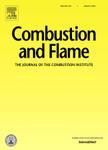版权所有:内蒙古大学图书馆 技术提供:维普资讯• 智图
内蒙古自治区呼和浩特市赛罕区大学西街235号 邮编: 010021

作者机构:US Army Combat Capabil Dev Command DEVCOM C5ISR Ctr RTI Aberdeen Proving Ground NY 21005 USA Catholic Univ Amer EECS Dept 620 Michigan Ave NE Washington DC 20064 USA Univ Arizona Wyant Coll Opt Sci Infrared Syst Grp Tucson AZ 85721 USA
出 版 物:《APPLIED OPTICS》 (Appl. Opt.)
年 卷 期:2025年第64卷第4期
页 面:845-854页
核心收录:
学科分类:070207[理学-光学] 07[理学] 08[工学] 0803[工学-光学工程] 0702[理学-物理学]
基 金:Portions of this work were presented at the SPIE Defense and Security Symposium in the Infrared Imaging Systems: Design Analysis Modeling and Testing XXXV Conference in 2024
主 题:Image quality Image sensors Imaging systems Imaging techniques Machine learning Sensor performance
摘 要:This research studied the effect of variations in a sensor s F lambda/d metric value (FLD) on the performance of machine learning algorithms such as the YOLO (You Only Look Once) algorithm for object classification. The YOLO_v3 and YOLO_v10 algorithms were trained using static imagery provided in the commonly available training dataset provided by Teledyne FLIR Systems. Image processing techniques were used to degrade image quality of the test dataset also provided by Teledyne FLIR Systems, simulating detector-limited to optics-limited performance, which results in a variation of the FLD metric between 0.339 and 7.98. The degraded test set was used to evaluate the performance of YOLO_v3 and YOLO_v10 for object classification and relate the FLD metric to the probability of detection. Results of YOLO_v3 and YOLO_v10 are presented for the varying levels of image degradation. A summary of the results is discussed along with recommendations for evaluating an algorithm s performance using a sensor s FLD metric value. (c) 2025 Optica Publishing Group. All rights, including for text and data mining (TDM), Artificial Intelligence (AI) training, and similar technologies, are reserved.